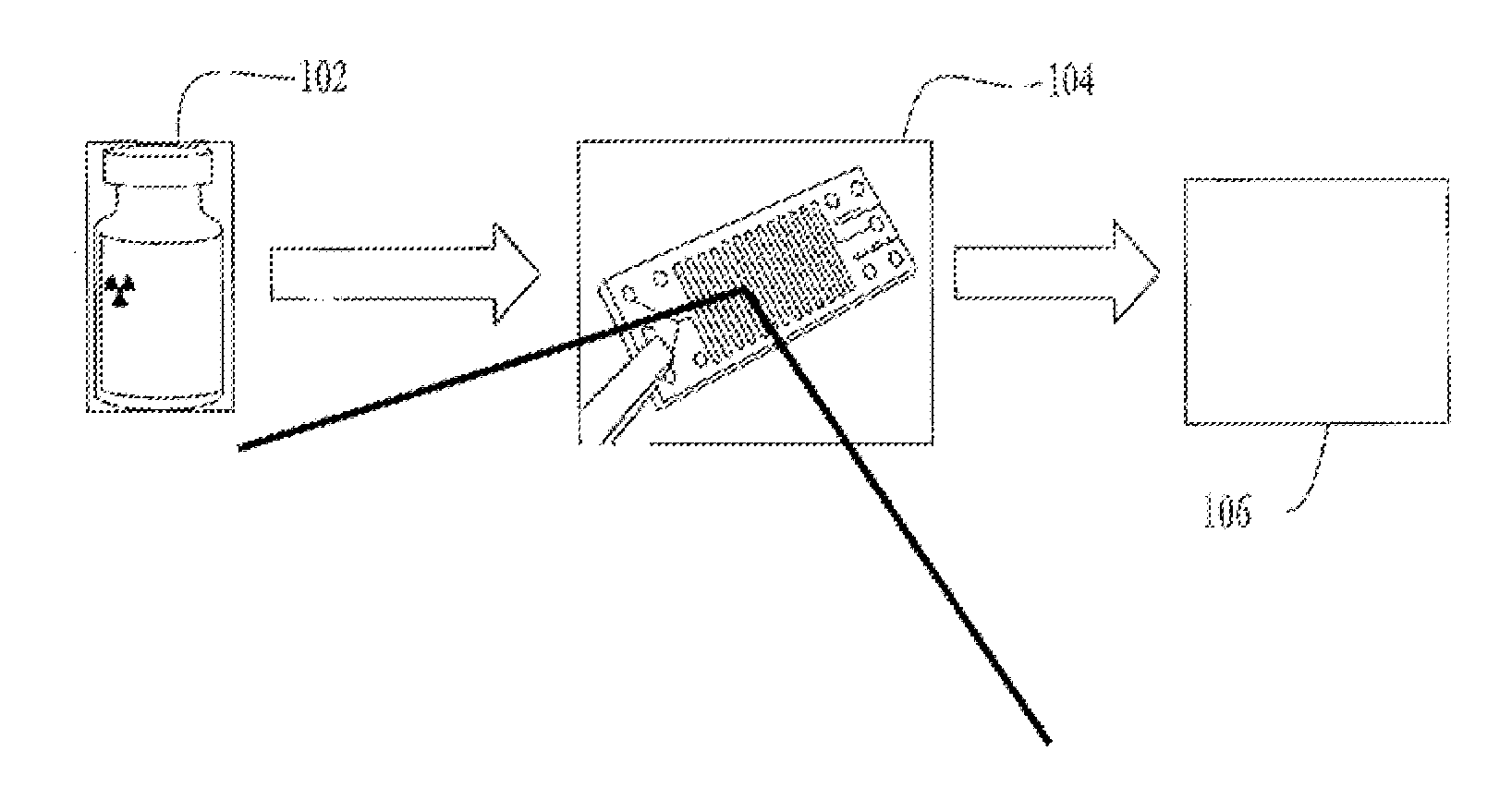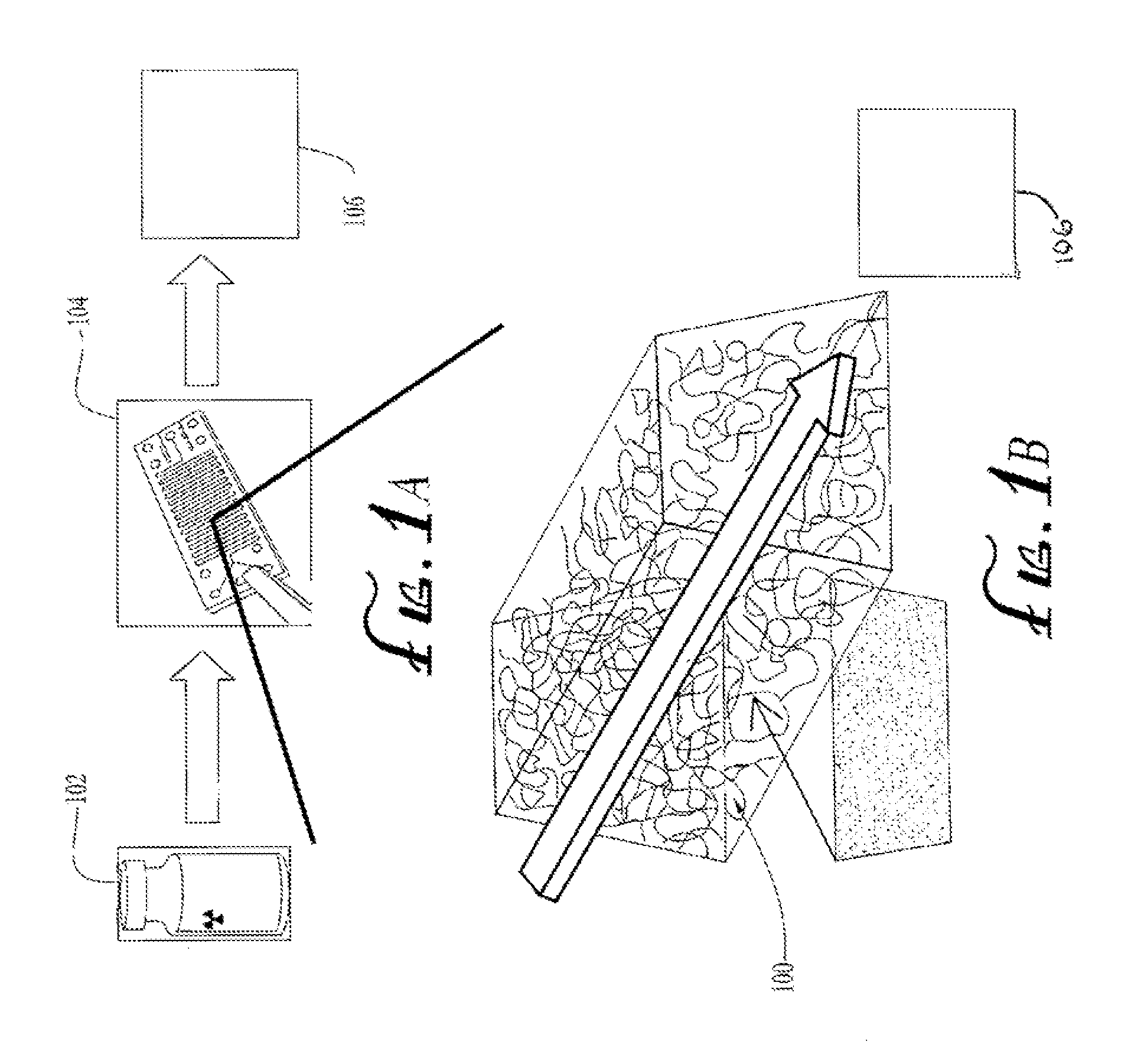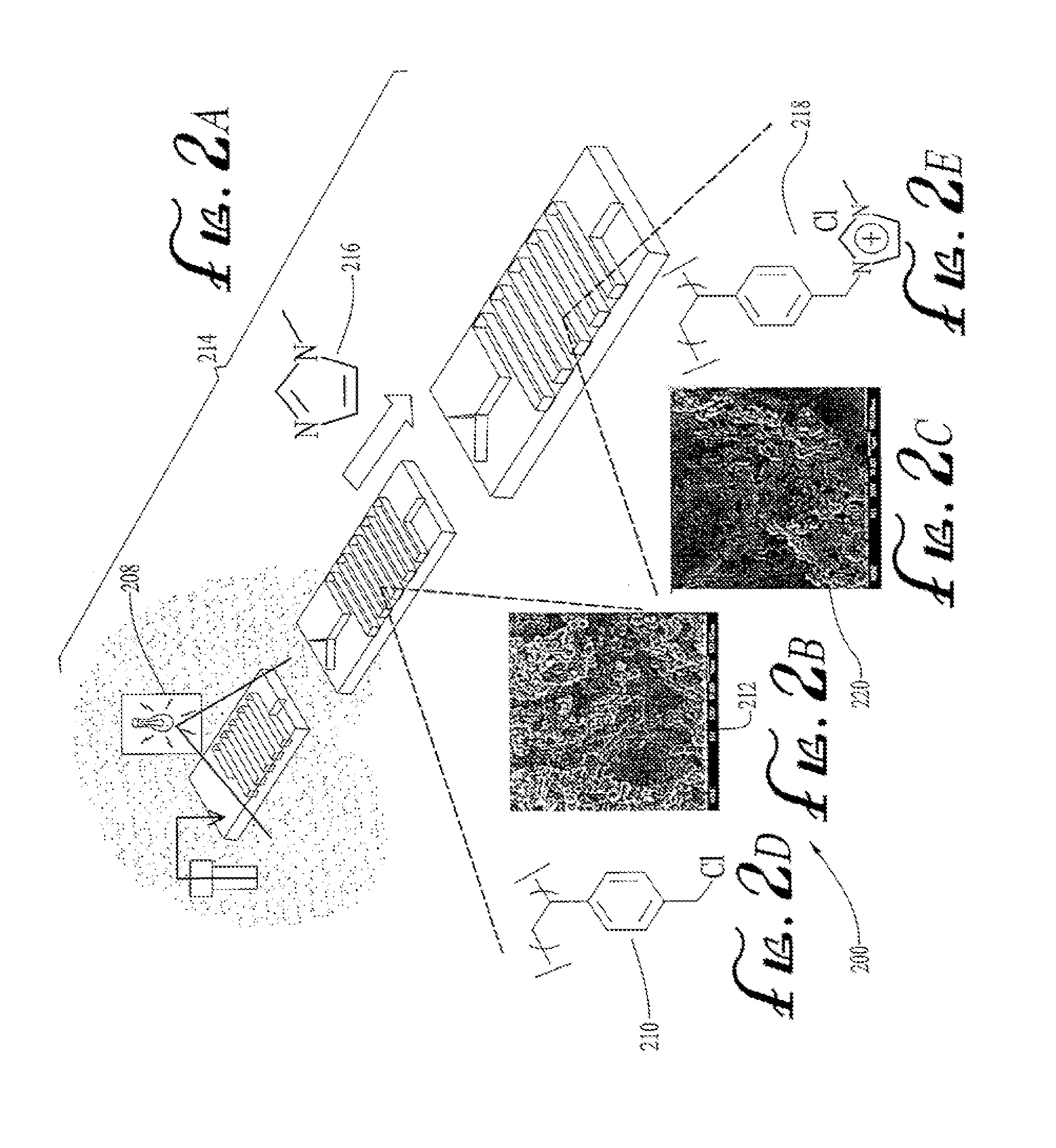Polymer monoliths for solvent exchange in continuous flow microfluidic device
a microfluidic device and polymer monolith technology, applied in the direction of esterified saccharide compounds, sugar derivative introduction, nuclear elements, etc., can solve the problem of inability to efficiently downscale the approach to a microfluidic platform, inability to trap a sufficient number of radioactive fluoride ions within the micron-sized channel, and inability to efficiently downscale the approach to a microfluidic chip. , to achieve the effect of high efficiency
- Summary
- Abstract
- Description
- Claims
- Application Information
AI Technical Summary
Benefits of technology
Problems solved by technology
Method used
Image
Examples
Embodiment Construction
[0048]The present disclosure sets forth a first high-efficiency concept of integrating a functional polymer monolith on a flow through microfluidic platform to perform ion concentration, solvent exchange and activation processes within a single chip. Due to the difficulty in packing micron-sized beads onto or into microfluidic channels, this disclosure sets forth methods adapted to the in situ polymerization of functional monoliths within 150×150×52000 μm channels. Such channels can be formed on or within a microfluidic chip or any shape and size container, for example, on a base body portion of the chip. It is understood where the present disclosure discussed formation of channels in a chip it can include the channels being formed within the chip and / or on the chip. Polymer monoliths are uniquely suitable for microfluidic applications due to the ease of preparation, high loading capacity, high surface area, tunable pore size, tunable functionalities and high hydrodynamic flow. Conv...
PUM
| Property | Measurement | Unit |
|---|---|---|
| Length | aaaaa | aaaaa |
| Volume | aaaaa | aaaaa |
| Capacitance | aaaaa | aaaaa |
Abstract
Description
Claims
Application Information
 Login to View More
Login to View More - R&D
- Intellectual Property
- Life Sciences
- Materials
- Tech Scout
- Unparalleled Data Quality
- Higher Quality Content
- 60% Fewer Hallucinations
Browse by: Latest US Patents, China's latest patents, Technical Efficacy Thesaurus, Application Domain, Technology Topic, Popular Technical Reports.
© 2025 PatSnap. All rights reserved.Legal|Privacy policy|Modern Slavery Act Transparency Statement|Sitemap|About US| Contact US: help@patsnap.com



